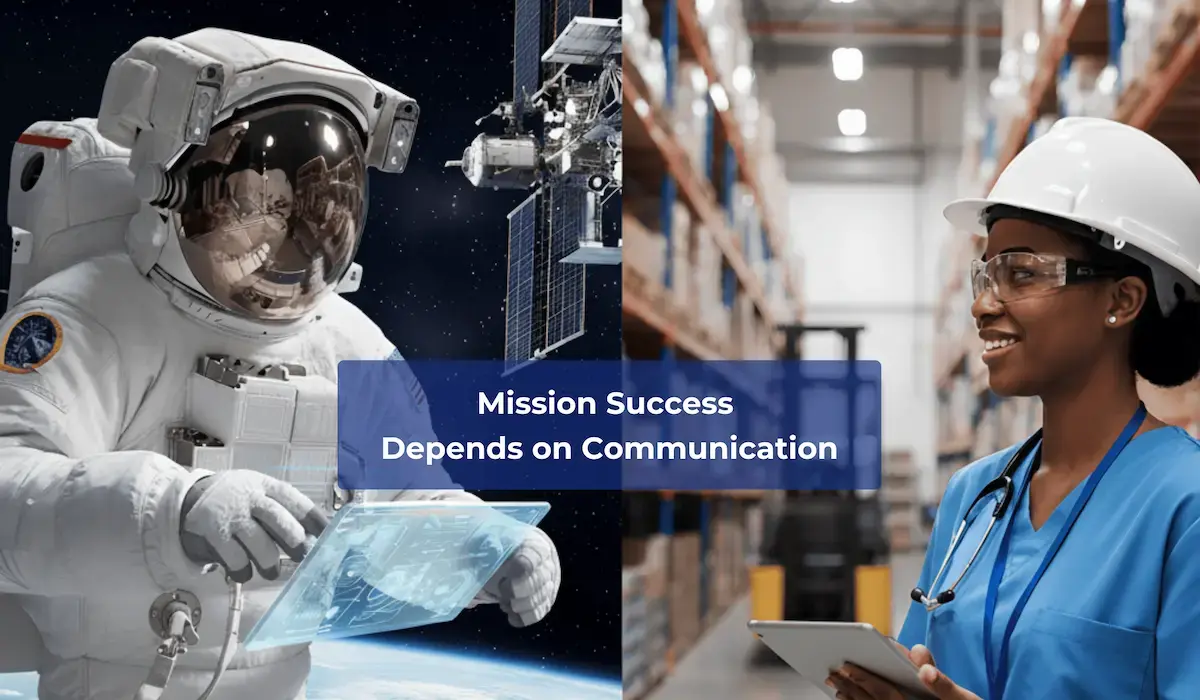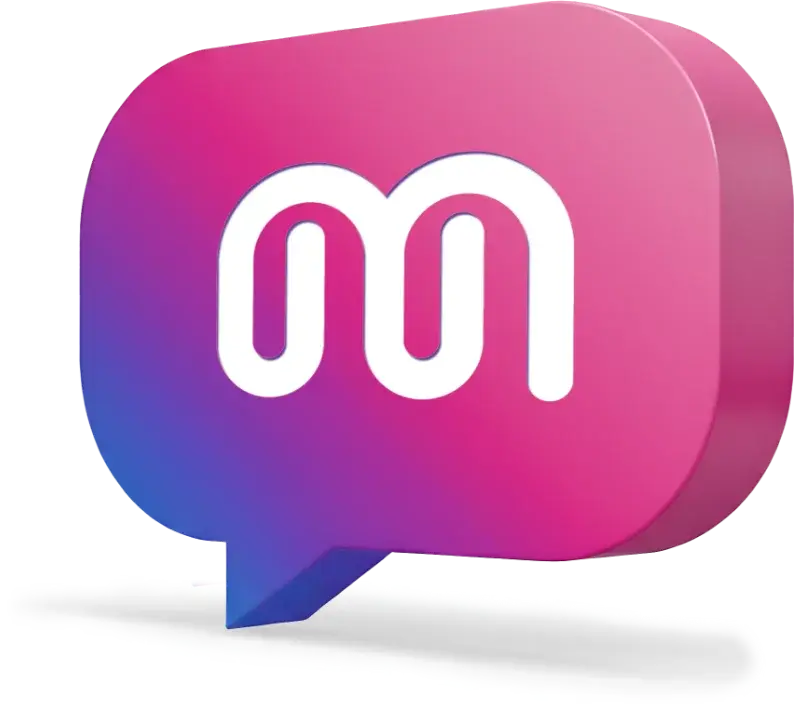SECTION
Beyond Email: Communication Strategies to Engage Frontline Employees

Listen to this article:
Frontline employees are the backbone of industries like retail, healthcare, logistics, and manufacturing. However, many of them don’t have a working desk, a company email, or the time to check company announcements.
Despite this, organizations often rely on email and intranet as their primary internal communication channels. The result? Frontline workers feel left out, disengaged, disconnected, and unsure how their work contributes to the overall business success.
In this blog, we explore why email fails frontline workers, main communication gaps, what people really need from internal comms, and the most effective strategies for engagement with real-world examples.
What is frontline employee engagement?
Engaging frontline employees means ensuring they are informed, feel valued, and are connected to company goals, regardless of whether they work behind a desk. When done well, employee engagement increases productivity, reduces turnover, and drives better business results.
Think of engaging your frontline people like a space mission. Astronauts, much like frontline workers, operate on the edge, in demanding environments where success depends on clear communication and collaboration.
Mission Control (headquarters) provides updates, but astronauts can’t always be glued to a screen. They need timely, relevant, and trusted information to stay aligned. If communication isn’t efficient, astronauts face blackout zones, the same way frontline workers feel when cut off from internal comms.
And just as every successful spacewalk or docking is celebrated, recognizing frontline employees for their contributions boosts morale. In both space missions and workplaces, success depends on constant, meaningful engagement.
Common challenges in engaging frontline workers (and how to beat them)
Before you can begin to develop and support a dedicated and driven frontline team, you must address their unique needs:
- “Our frontline isn’t tech-savvy.” ➡️ Choose easy-to-use internal communication tools.
- “We don’t have the budget for more licenses.” ➡️ Invest in platforms that are designed to scale with your company.
- “Our people usually get bombarded with irrelevant updates in WhatsApp or Teams groups.” ➡️ Cut the noise with targeted, relevant company updates.
- “Our frontline workers lack access to company email or a work computer.” ➡️ Choose tools that have mobile versions, so frontline workers can connect and disconnect from work easily.
- “Language barriers and shift work.” ➡️ Provide multilingual materials and timely updates around shift changes.
- “Our company has high turnover rates.” ➡️ Use strong onboarding, career pathways, and recognition to build loyalty.
- “Frontline employees struggle to see how their daily work connects to company goals.” ➡️ Ensure goal alignment across teams.
- “Frontline workers miss recognition and feel excluded from company culture.” ➡️ Implement recognition programs to reward their contributions. Get inspired by our article with recognition programs from HR leaders.
Best practices to engage frontline employees
Engagement strategies need to be both practical and flexible. Now that we’ve given you a glimpse of how to engage your frontline employees, let’s look at proven best practices that are easy to implement:
- Replace clunky systems with simple, app-based platforms that frontline employees actually want to use. Mobile-first and intuitive tools that are easy to use reach employees instantly, no matter where they work from.
- Messages should be relevant and targeted. Segment them by team, shift, or location to avoid message overload.
- Internal communication should be inclusive and accessible. Offer multilingual support, use visual formats, and simple logins to keep everyone connected.
- Effective internal comms is not enough. Build credibility and trustworthiness through a solid organizational culture. Payroll accuracy, safe working conditions, and flexibility matter as much as the messages themselves.
- Frontline employees usually work in shifts. Short, face-to-face updates before or after shifts keep them aligned and informed.
- Empower managers as messengers. Employees trust their direct managers more than company-wide announcements. Equip managers with the right tools and talking points so messages land with impact.
- Build real feedback loops. Engagement is a two-way street. Create channels for employees to share ideas and concerns, then follow up so they see their feedback drives action.
- Celebrate loudly and often. Recognition boosts morale more than almost anything else. Celebrate milestones, birthdays, and wins publicly to make employees feel valued and connected.
- Train in the flow of work. Long training sessions don’t fit frontline realities. Use micro-learning, short videos, or quick job aids that employees can use on the go.
- Show them a growth path. Engagement thrives when employees see a future. Offer clear career paths, mentorship, and upskilling programs that show frontline workers they can grow with the company, like their office colleagues do.
How to measure frontline employee engagement
After implementing your strategy, you'll need to monitor its effectiveness and impact. You can identify areas for improvement, pinpoint where high engagement already exists, and evaluate the program's success by utilizing trustworthy metrics that measure frontline employee engagement. Here's what you should track:
✅️ eNPS (employee Net Promoter Score) → quick pulse on satisfaction.
✅️ Turnover and retention rates → direct indicators of disengagement.
✅️ Surveys and polls → short and frequent employee surveys to capture sentiment.
✅️ Manager check-ins → regular, structured conversations give context beyond numbers.
The business impact of better communication
Engaged employees stay longer, perform better, and represent the company culture authentically. Disengaged employees tend to leave quickly, driving up turnover costs and negatively impacting performance. Moreover, informed, supported, and motivated employees deliver better service and fewer errors. This creates stronger customer experiences and builds loyalty.
Here are a few real-world employee engagement strategies for frontline employees:
- The Stafford Collection introduced “The Empowered Program,” gathering feedback through pulse surveys and acting on employee ideas. Participation rates reached 93%, culture scores improved, and retention increased within just 90 days.
- A National Appliance Repair Company engaged its field workforce with structured feedback and action cycles every 60 days. The program resulted in fewer customer complaints, cost savings, and enhanced teamwork.
- Leviatan Group used Mirro to help frontline employees connect and celebrate milestones with their office colleagues. Mirro provided a shared space where colleagues, regardless of location, can offer and receive feedback, recognize achievements, and engage in structured performance-related activities. This helped Leviatan build a unified and collaborative culture where everyone feels valued and connected.
Going beyond email to engage frontline employees isn’t optional
Hopefully, this article showed you that email alone can’t reach your frontline workforce. Modern engagement requires mobile-first tools, inclusive practices, and strategies tailored to the realities of frontline work.
Tools like Mirro make this shift easier, delivering mobile-first, transparent, and engaging internal communication designed to reach every employee, regardless of their location. With the right approach and the right tools, engaging frontline employees isn't just possible; it's a driver of business success.
Final thought
Just as astronauts depend on Mission Control for clear guidance, recognition, and support, frontline workers depend on their organizations. When communication breaks down, both space missions and business operations risk failure. But when leaders invest in timely updates, recognition, and growth opportunities, the mission succeeds. Engaging frontline employees is like keeping a spacecraft on course, constant alignment, trust, and feedback ensure you safely reach your destination.
Frequently Asked Questions
-
Why is frontline employee engagement important?
-
How do you improve morale among frontline employees?
-
What’s the impact of frontline engagement on customers?
-
How do you measure frontline engagement effectively?
Frontline employee engagement is important because frontline workers interact most directly with customers and operations. Engaged employees provide better service, make fewer mistakes, and stay longer with the company.
There are multiple ways to improve morale, but the most common and effective ones are through recognition & wellbeing programs, safe working conditions, and giving employees a voice.
Higher engagement translates to better customer satisfaction and loyalty, directly impacting business revenue.
Use eNPS, turnover, pulse surveys, and manager feedback, and connect results to business outcomes.






